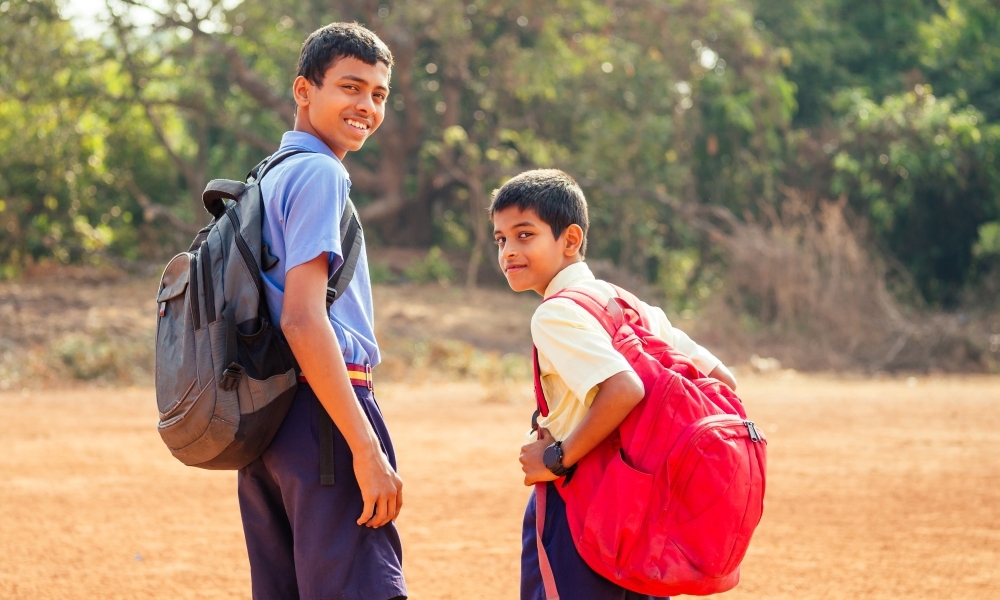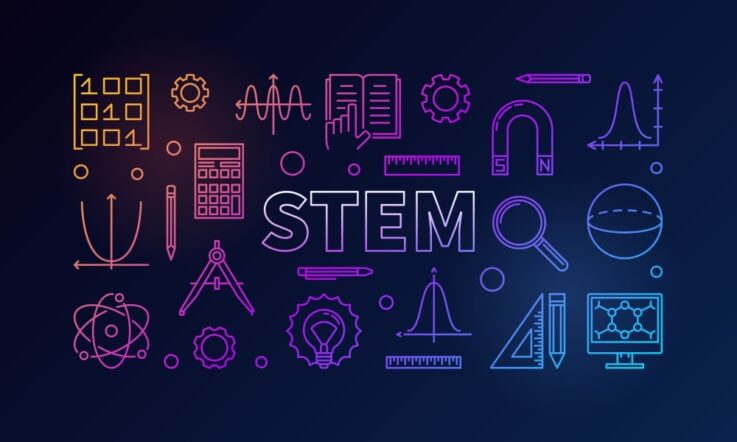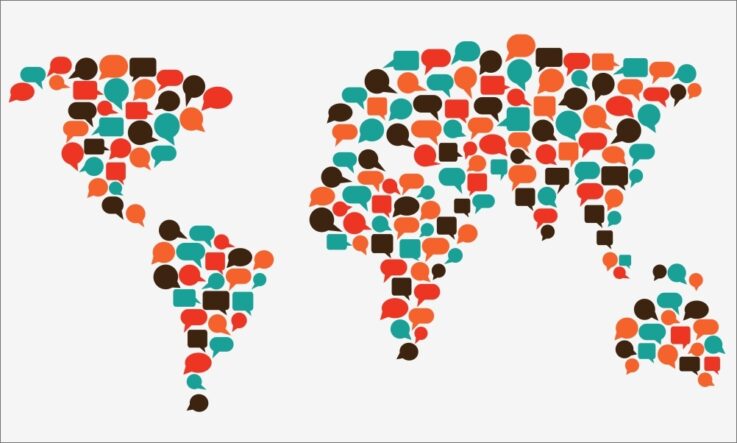The global call to inclusive education cannot be fulfilled unless we eliminate pre-conceived societal notions, stereotypes, and prejudices. Transforming teacher education programs in India will empower teachers to inculcate the values of equality, equity, and inclusion among the current generation of learners, suggests Professor Vimala Ramachandran.
As I was growing up, I was told by my parents and teachers that the Indian Constitution guarantees the rights to equality, life, liberty, to own property, and to be treated equally regardless of gender, religion, or the language I speak. My grandfather used to tell us about the freedom struggle and why and how our Constitution was so progressive. He said political democracy would not be possible without social equality. I grew up believing this was true and applied to all of us, regardless of our social, regional, linguistic, caste, and religious identities. This was the case until I was exposed to another reality.
Understanding ground realities
In April 1968, Martin Luther King Jr. was assassinated which led to protests across the United States. As this was a key event in global politics, one of the teachers in my school (Kendriya Vidyalaya) in Trivandrum asked us to research him. The teacher then told us about Narayana Guru – a great social reformer of Kerala who dedicated his life towards removing the caste-based stratification of the society. Some of us got the opportunity to take up a project where we compared the lives of Martin Luther King and Narayana Guru, and even visited the Advaita Ashram.
This simple project changed my perception of the world and the caste system; most importantly, I realised I had taken constitutional rights as given and universal. As the years rolled by and I reached university, I became increasingly aware of the different dimensions of inequality – caste, religion, gender, colour, occupation, economic condition, social status, and so on. I leapt headlong into the women’s struggle against dowry and violence, and became politically aware of ground realities. The spark of curiosity and the ability to question was lit by one simple project undertaken in the eighth grade.
Diversity in Indian schools till 1980s
Schools are important institutions where students internalise societal values. Schools can therefore perpetuate and reinforce existing attitudes and practices, or they can teach children to question them. Schools can enable free mixing of children from different classes and communities, or they can insulate them from prevailing differences and inequalities in societies.
In many ways, the central government-run Kendriya Vidyalayas (KV) that were initially meant for children of officers in transferable jobs and other workers, continued to offer diversity till the 1980s. Children belonging to different castes and communities, different ethnicities, and economic strata studied together. The KVs also had a diverse group of teachers posted in different schools from time to time who were exposed to different regions and their cultures.
I am not sure if this description would hold true today as most senior- and middle-level officers shun government schools and prefer to send their children to private schools or high-class officer-centric schools that have been set up. Nevertheless, those of us who studied in these schools through the 1960s and 1970s were more aware of cultural and linguistic differences within India and of social and economic inequalities.
Equally, we all were well versed with the Preamble of our Constitution as we used to read it out or recite it from time to time, especially on Republic Day. We also participated in mock parliaments and once even organised a mock constitutional assembly.
Role of teachers in egalitarian schooling
Unfortunately starting from the late 1970s to the present, hierarchies and differences in schools have become more pronounced. Who you are, where you live, your economic status, and social identity determine which school you attend, thus reinforcing existing social differences and divisions. However, despite the troubling reality of hierarchy and segregation in our schools, I have learnt that teachers can make a huge difference in the way children react and respond to inequality and injustice.
In my three decades of interaction with teachers, students, and administrators, I have met extraordinary people working in all kinds of schools. There are teachers who instill a sense of self-worth and dignity among students in poorly resourced schools or encourage students to appreciate what they have and show empathy and understanding to those who do not have the same opportunities that the urban middle-class and rich take for granted.
What I have learnt through the years is that a teacher’s belief and her confidence in the abilities of every child are essential in advancing learning. They influence her attitude towards children, the pedagogy she uses in the classroom, and her availability for every single child. A teacher can draw the attention of her students to issues of inclusion and exclusion.
For a study that I co-authored with Naorem in 2013, I remember visiting a rural elementary school in Rajasthan where the Headmaster ensured that children queue by height and sit together for mid-day meals. He discontinued the practice of some children filling the water pots kept outside every classroom and made sure children took turns (by roll number) to wash and fill the water-pot from the hand pump. He ensured there were no caste-based distinctions inside the school and he also went out of his way to support and encourage children from extremely poor migrant families to attend school regularly. For instance, he visited the homes of children with irregular school attendance to understand their problems and challenges. He also organised after school hours informal ‘tuitions’ in the evening. This school was in sharp contrast to schools we visited where mid-day-meal and drinking water stations were the sites for exclusion.
Similarly, a couple of exemplary private schools had already opened their doors to children from poor neighbourhoods well before the implementation of the Right of Children to Free and Compulsory Education Act, 2009, (henceforth RTE Act) that introduced the provision of 25 per cent reservation for children from Economically Weaker Sections (EWS) of society.
My interaction with one school revealed that they had already enrolled children with disabilities long before it was made mandatory by the government. The same school opened its doors to street children supported by a local non-profit organisation. Being located in a fairly upmarket neighbourhood in New Delhi, this policy of the school infused a different kind of energy. The teachers and children of the school stood out for being empathetic and inclusive, and the children mixed with each other naturally. The founder Principal of this private school and her successors had the same inclusive attitude as the Headmaster of the school in Rajasthan.
In similar vein, teacher prejudices, biases, and attitudes can also be barriers to learning. If teachers believe that some caste or class of children do not have the innate ability to learn, they are most likely to ignore the concerned children and focus only on those who they believe can learn.
For instance, if a teacher believes that girls cannot learn mathematics, she may end up building a classroom environment where girls may feel afraid to ask questions or clear their doubts. If any school management views EWS children as being ‘thrust upon them’, then the daily experience of children from both EWS groups and fee-paying groups would reinforce differences and prejudices.
Several years ago, one Principal of a government higher secondary school referred to street children enrolled in the school through a non-profit group as being ‘kachra’, meaning garbage. The attitude of the Principal filtered right across the school – to teachers and children. As a result, unlike the inclusive private school in New Delhi and the rural school in Rajasthan, street children felt uncomfortable and wanted to quit. Similarly, private school heads and teachers who resent the 25 per cent EWS reservation end up treating poor children differently which results in many of them either opting out altogether, or re-enrolling in government schools.
Breaking prejudices with teacher training
Nurturing inclusive teachers who believe in the abilities of all children to learn has to start early. Unfortunately, conventional B Ed or D Ed programs rarely devote any time to understanding the roots of inequality and discrimination. Nor do they help teacher candidates recognise and internalise the constitutional guarantee of equality and non-discrimination. Some unconventional programs, for example, the B El Ed of the University of Delhi, lay a lot of emphasis on understanding the social and economic milieu in which the school is embedded.
Similarly, I found that the Teach for India fellows placed in government schools developed an understanding of the structural causes of inequality; over the years, I have seen many of them grow into highly committed and capable social change makers. I have also found that young people who have worked at early stages of their career for field-based NGOs supporting government schools and children in the community, develop the ability to look beyond the surface, question long-held prejudices and stereotypes, and grow into caring and empathetic social workers.
Many decades ago, I was part of the founding team that designed and launched an unusual government-sponsored women’s empowerment program called Mahila Samakhya (1988-89). Among the many hard questions that the program was trying to answer, designing a training and orientation program for our team that would make them question existing prejudices was the foremost one. How could we make sure all functionaries – from village level workers right up to the national office in New Delhi – would be committed to inclusion and non-discrimination, respect the innate wisdom and knowledge of all women, take on board the lived experiences of people, and build from there?
When the first residential accelerated learning program for adolescent girls started, our focus was on reaching those who had dropped out and supporting them to ‘catch the missed education bus’. Teachers recruited for these centers – known as Mahila Shiksha Kendras – had to not only believe that dropouts can learn and move ahead but also needed to understand the social, economic, and cultural factors that led to their dropping out or contributed to poor performance, as well as the exclusion experienced by learners in schools.
The success of both the Mahila Samakhya Program and Mahila Shiksha Kendra depended on the robustness of the training program and the continued on-site support to teachers and social-animators or facilitators. Three interlinked strategies helped design a dynamic and need-based or situation-specific training and orientation program for the first team of workers and teachers.
First
We decided to structure interviews as a group exercise where we observed if a candidate hesitated to drink water or eat food served by a Dalit or Muslim or a person from the most deprived social group in the area. We then designed a session to discuss observations in the group and gauge the ability or willingness of candidates to question their beliefs and be open to fresh ideas. This was a difficult process to execute without intimidating the candidates and making them feel that they are being ‘judged’ unfairly.
We also wanted to communicate that it is appropriate to reflect on one’s own experiences and question beliefs for individuals to learn and progress. We had to make sure the candidates did not experience ‘exclusion’ because of their traditional prejudices and at the same time communicate the importance of questioning belief systems. It was always a difficult balancing act – but it worked and helped us build an inclusive team that set the basic ground rules of the program.
Second
I have written elsewhere in detail about the fact that transaction of knowledge or information needs to be a creative exercise, where the ‘trainees’ knowledge base is tapped enhancing their sense of self-worth. The facilitator has to draw upon the collective knowledge of the group, give them the opportunity to articulate their opinion, and build upon this in subsequent sessions.
An experiential learning process involved both the mind and the heart. Just giving information or making trainees read the Preamble to the Constitution would not be sufficient – we had to engage deeply with each trainee, helping them look at the value of common sense and relate daily experience as citizens to the work they were expected to do with women or girls.
Over the months, we came to understand that when the heart is convinced, the information that is shared is internalised immediately. To achieve it, the information must not only be authentic in the eyes of the trainee, but must be like a mirror that reflects the ‘truth’ as perceived by the trainees.
Training programs often ask trainees not to mix professional approach and ‘common sense’, however, over the years we realised the value of building bridges between these two worlds. This opens the minds and hearts to new ideas, a different vision of the world, and a firm belief in the potential of all learners. This also encourages teachers to reach out for local resources and local experiences to weave into their teaching-learning process. Connecting professional principles to real-world experience, we believed, is essential to bring about attitudinal changes.
Third
Knowledge of ones ‘subject’, the ability to access resources to augment the teaching-learning process, and the willingness to admit that one does not know everything were other important dimensions of the training process. The initial training may be for a few weeks or months, but it is not sufficient to instill the confidence or skills required to navigate the classroom or the community mobilisation processes.
Periodic review and refresher modules, on-site hand-holding, and support and opportunities to read and discuss need to be a continuous and regular process. What a trainee learns in the classroom situation and her ability to practice what she has learnt should not be considered a straight forward linear process. This moves in a spiral fashion – some bursts of confidence and some periods of self doubt. This is where continuous and really accessible support, a sounding board, and group meetings of teachers / social activists can help the group of learners move forward.
One of the biggest drawbacks of the teacher-training processes that were adopted in India through the late 1990s and 2000s was the 20–25 day one-time module. While such intensive workshops do help, the learning process needs to be sustained through regular interactions. It is particularly important to reaffirm newly learnt methods to ensure inclusion in classrooms and schools.
The above principles are not new or unique – they have been used across the world by Freirean educators, feminist organisations, and groups struggling with racism and casteism. The problem is that we have not drawn upon the wealth of these experiences to inform educational training and capacity building processes.
Questioning prejudices is just the first step in a long and exciting journey of learning to learn and practising non-discrimination and equality in all spheres of educational practice. Teacher education programs – both pre-service and in-service – need to grapple with the issue of inclusion and exclusion, the crushing weight of discrimination on young minds and most importantly, the courage to stand up and uphold the constitutional values of equality and non-discrimination.
If we can bring about positive changes among our teachers, they in-turn can encourage our children to question injustice and exclusion. We just need to start with teachers − that is the first step!
Equitable education for all will remain an illusion unless we tackle stereotypes and prejudices head-on and help teachers and administrators become fully committed to the spirit of equality enshrined in the Indian Constitution.
A version of this article first appeared in the print magazine Teacher, distributed in India, in October 2020.
References
Ramachandran, V. (1998). Engendering development: lessons from the social sector programmes in India. Indian Journal of Gender Studies. 5 (49), 49-63.
Ramachandran, V. and Taramoni N. (2013). What it means to be a dalit or tribal child in our schools: a synthesis of a six-state qualitative study. Economic and Political Weekly. XLVIII (44), 43-52.



